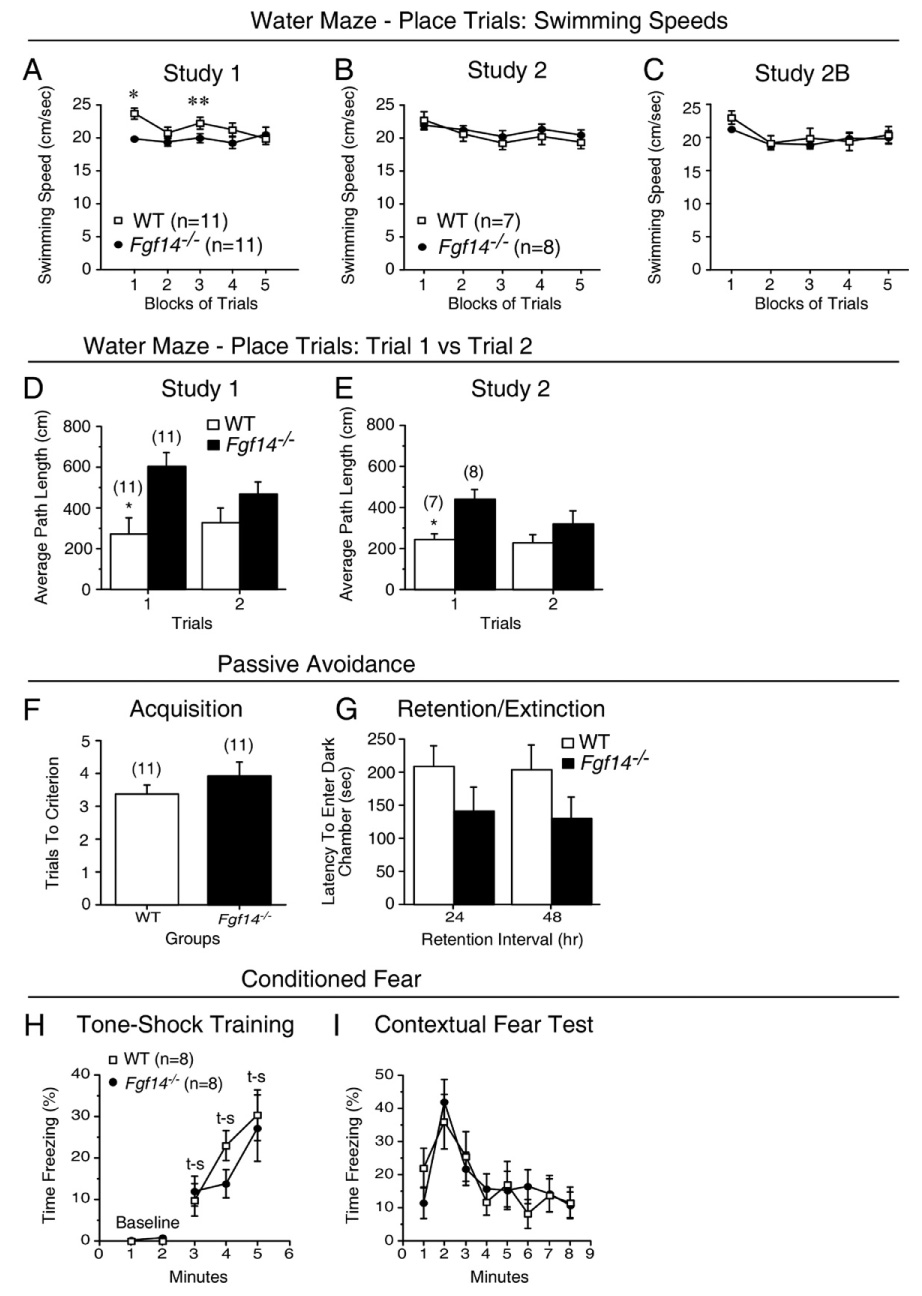Fig. 4.

Swimming speeds, retention deficits and normal passive avoidance and conditioned fear performance in Fgf14−/− mice. (A) A significant genotype by blocks of trials interaction and subsequent contrasts pertaining to the swimming speeds data from the place trials in study 1 suggested that the Fgf14−/− mice were slower than the WT mice early in acquisition training but that similar speeds were observed in the two groups at the end of training. *p=0.0005; **p=0.046. (B) In contrast, no differences in swimming speeds were observed between groups during the place trials in study 2, suggesting that compromised swimming abilities were not responsible for the impaired spatial learning performance in Fgf14−/− mice. (C) The swimming speeds of Fgf14−/− and WT mice were also found not to differ during the place trials in study 2B when the mice were required to learn a new submerged platform location. (D, E) Fgf14−/− mice exhibited significant (*) impairment compared to WT controls on trial 1 but not trial 2 in terms of path length to the submerged platform averaged across test days during place trials in both study 1 (D) and study 2 (E) (p=0.001 and 0.008, respectively). The memory demands present during trial 1 were greater than those present for trial 2 since there was an interval of 24 h between acquisition trials with respect to trial 1, whereas only 60 s intervened between acquisition trials for trial 2. (F) Fgf14−/− mice did not differ significantly from WT controls in trials to criterion (mean±SEM) during passive avoidance acquisition in study 1. (G) Although the latencies (mean±SEM) to enter the dark-shock chamber tended to be shorter for the Fgf14−/− mice, they were not significantly different from WT controls when tested 24 h (retention) or 48 h (extinction) after passive avoidance acquisition. (H) A significant main effect of genotype [F(1,14)=6.6, p=0.02] was found on the baseline data from min 1 and 2 during day 1 of conditioned fear testing. However, subsequent pairwise comparisons showed that the Fgf14−/− mice and WT littermate controls did not differ significantly in the percent of time spent freezing (mean±SEM) for either minute. In addition, no significant differences were observed between Fgf14−/− mice and WT controls in the percent of time spent freezing (mean±SEM) during CS-US [t-s (tone-shock)] training for min 3 to 5. (I) Fgf14−/− mice also did not differ significantly from WT controls (mean±SEM) in percent of time freezing during the contextual fear test conducted 24 h after tone-shock training when the mice were placed back into the same chamber.
